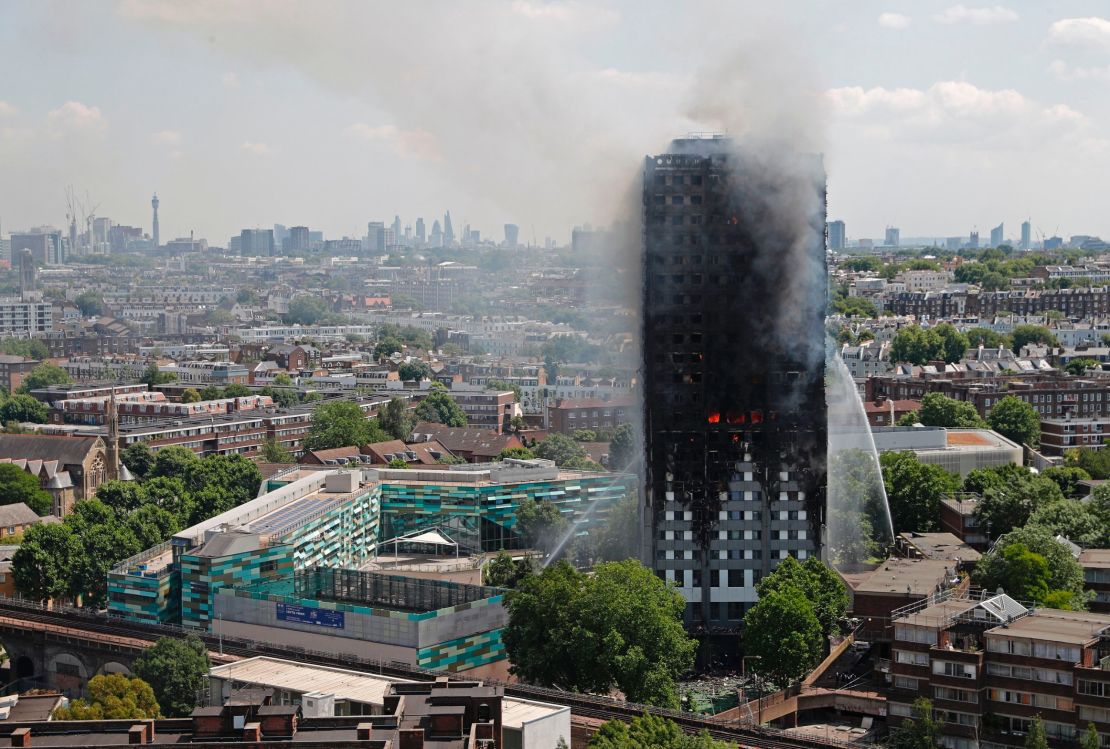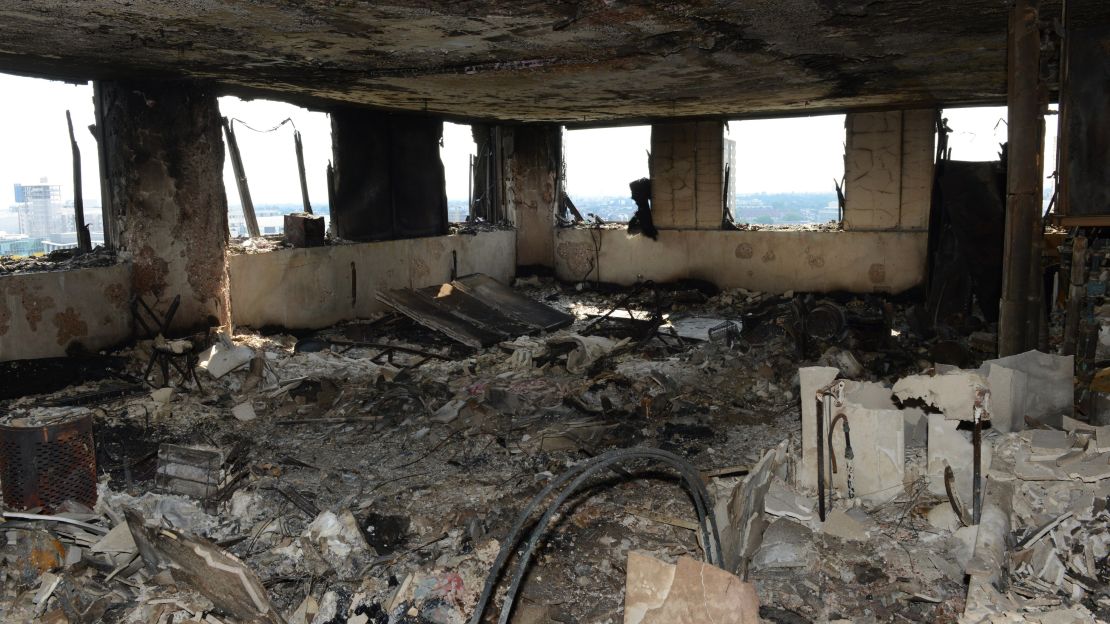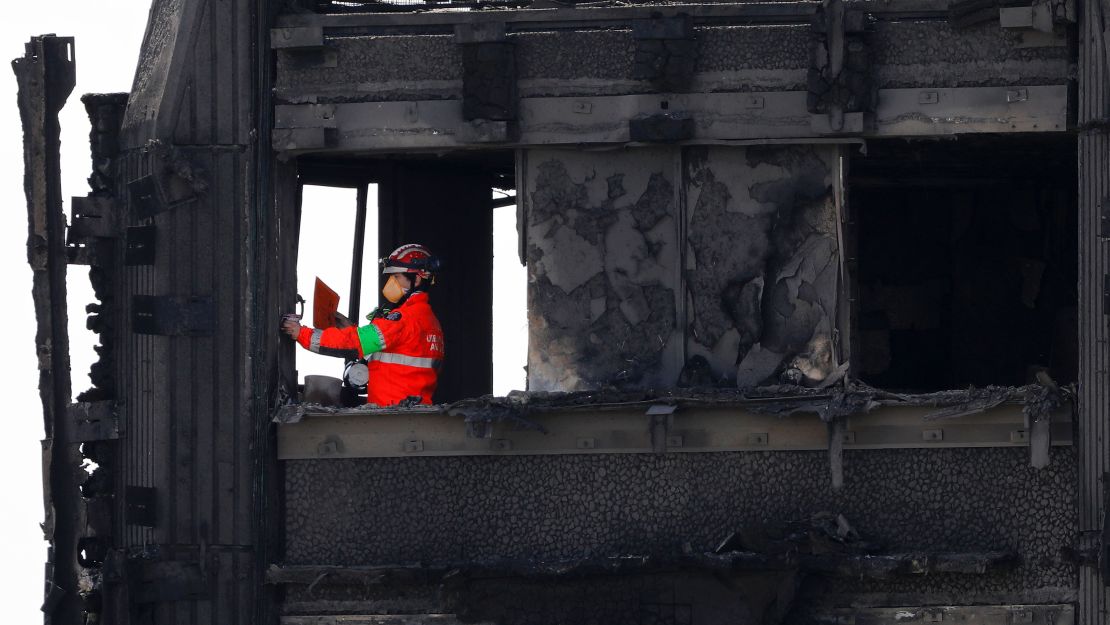A report on UK building regulations set up after the Grenfell Tower tragedy found “deep flaws” in the rules but stopped short of calling for a ban on cladding, the combustible material blamed for contributing to the fire that killed 71 people in London last June.
Residents and campaign groups had called for a ban on combustible materials being used in construction.
Grenfell Tower was covered with cladding that consisted of aluminum panels and a combustible plastic core. It was also backed by a synthetic insulation which was also classified as combustible.

The failure to recommend an outright ban on cladding led Labour Member of Parliament David Lammy to call the review “a betrayal and a whitewash.” Lammy’s friend, 24-year-old artist Khadija Saye, died in the fire.
Shahin Sadafi, chairman of the local campaign group Grenfell United, said the report left residents “disappointed and saddened.”
The review, led by Dame Judith Hackitt, concluded that the report had uncovered a “race to the bottom” in building safety practices and had discovered “ignorance” and “indifference.”
But speaking to BBC Radio Four on Thursday, Hackitt stood by her stance on not recommending an outright ban on all flammable materials in cladding, insisting such a move would not solve the entire problem.
“The guidance already says that you can only use materials of limited combustibility or materials that have been fully tested,” she said.
“It is clear from Grenfell and from the other tests that have been done that despite the guidance currently saying that, people were putting other materials up, so I don’t think a ban will work.”

Campaigners, residents and lawmakers had argued for a total ban on cladding and a review of building regulations.
RIBA, the Royal Institute of British Architects, warned the government last month that the review would not deliver the necessary changes, adding that it wanted a full banning on cladding, a requirement for sprinklers to be fitted and the addition of a second escape route for high-rise residential buildings.
Cladding on hundreds of tower blocks across England – which was tested in the aftermath of the deadly fire – failed safety tests.
The report comes a day after the UK government announced it would spend £400 million ($540 million) to remove dangerous cladding from tower blocks owned by councils and housing associations across the country.
Lawmaker: ‘I find it unfathomable’
There was fierce criticism of the report within moments of its publication.
“I simply fail to see how it is deemed appropriate for any combustible material to be used on any tower block in this country and I find it unfathomable that this review has not recommended an outright ban on the use of combustible material,” Labour MP Lammy said on Twitter.

Resident organizations also denounced the report and its failure to ban cladding.
“Worrying that a fire like Grenfell could happen again is something that keeps many of us awake at night,” Sadafi told the BBC.
“When we met Dame Judith Hackitt we asked her for an outright ban on combustible cladding. We are disappointed and saddened that she didn’t listen to us and she didn’t listen to other experts. The cladding on the Grenfell Tower was deemed to be limited combustibility … it must be banned.”

Responding to criticism, Hackitt rejected claims that an outright ban on cladding would solve all the problems.
“If people feel I haven’t gone far enough and for this system to work in the future requires, in addition, that there is further clarity or indeed banning of some of the materials which are currently used, I don’t have a problem with that,” she said.
“What I will be disappointed about is if people think simply banning cladding is going to fix this problem. It is a broken system and banning cladding on its own is not going to fix it.”
The review comes ahead of a judge-led inquiry into the Grenfell fire, which begins May 21.



